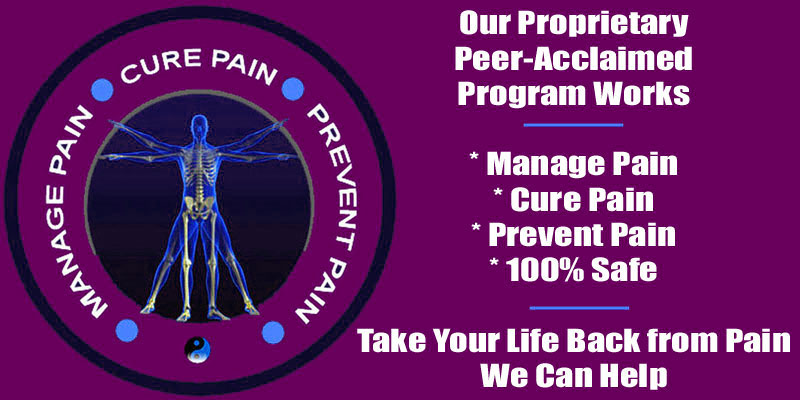
Functional scoliosis, also called nonstructural or nonskeletal scoliosis, is enacted by soft tissue conditions or a disease process, not anatomical change in the spine. In essence, the side-to-side spinal curvature is an effect of some other causative source, rather than a dedicated condition unto itself. This should be no surprise, as many forms of scoliosis, including structural, skeletal versions can be consequences of some other underlying condition, rather than independent conditions unto themselves.
There are many reasons why the spine would curve in reaction to muscular causation. Furthermore, this form of adult scoliosis can actually strike victims at any age, including children, making it somewhat ironic in nomenclature. Most cases of nonstructural scoliotic change can be linked to a definitive source process and can therefore be reversed easily by treating that underlying causation. However, sometimes, the scoliosis can not be linked to a definitive origin and other times, a known origin might be difficult to resolve, forcing the patients to endure a continuing atypical scoliotic curvature for a long time line, if not indefinitely.
This resource section explores the occurrence of functional scoliosis in the vertebral column. We will examine why functional side-to-side spinal curvatures develop, as well as provide some fascinating facts that will help patients to better understand the complexities of their diagnosis.
Functional Scoliosis Causes
Nonstructural scoliosis is seen in many people who demonstrate neuromuscular diseases, victims of traumatic back injury, people with leg length differentials, people with pelvic misalignments, postoperative torso surgery patients, appendicitis sufferers and people who express a wide range of muscular abnormalities including imbalances, length differentials and other pathologies:
Back injury is always a common instigator of muscular traumas that can temporarily affect spinal curvature in both front-to-back and side-to-side planes.
Different leg lengths and pelvic misalignments might cause tilting and curvature of the spine, particularly in the lower levels of the lumbar region. Some patients might also demonstrate a second compensatory curvature in the neck.
Postoperative patients often find themselves affected by scoliosis due to muscular trauma after an operation, the effects of drugs after surgery or neurological dysfunction that causes muscular contractions postoperatively.
Appendicitis can cause temporary scoliotic formations in the lower thoracic and lumbar regions.
Various diseases can incite side-to-side spinal curvature which qualifies to be called both functional and neuromuscular scoliosis.
Muscle imbalances might very rarely create scoliosis when one set is definitively tighter and the antagonistic match is lax.
Pharmaceutical products, drug interactions and illicit drugs can all have muscular or neurological consequences that can set scoliosis into motion through cramping or prolonged muscular contractions.
Thoracic outlet syndrome can rarely create the ideal circumstances for functional scoliosis to occur from ischemic cramping or other mechanism.
Torticollis can incite cervical or cervicothoracic scoliosis.
Functional Type Scoliosis Treatment
The ideal way to treat functional varieties of scoliosis is to target and resolve the underlying mechanism creating the transient curvature. However, this relies completely on accurate diagnosis, both of the functional nature of the scoliosis, as well as identification of the true causative process eliciting it. This is where things can get complicated.
Some patients are misdiagnosed as having structural scoliosis, especially if the reason for their functional side-to-side curvature is not obvious or overly symptomatic. Even patients who actively report muscular spasms are often informed by clueless doctors that these spasms are the result of their scoliosis and not the underlying cause. When patients are misdiagnosed, they might endure escalating levels of care and eventual surgery all for conditions that can usually be easily resolved without any invasive therapy in a short time line. This is one of many reasons why all scoliosis patients should seek expert diagnostic evaluation and treatment from a specialist who can recognize all varieties of atypical curvature and identify all the contributors to the present expression.
For accurately diagnosed patients, treatment will depend on the nature of the underlying cause, but should be curative in nature and not symptomatic for best outcomes and shortest therapeutic timeline.
Functional Scoliosis Factsheet
Functional scoliosis, like many other types, can be subcategorized, as mentioned above. There are permanent and transitory cases of functional side-to-side spinal curvature. There are varieties that also qualify to be called neuromuscular scoliosis. Some cases can even be considered congenital, when the underling causation exists prior to birth, while most would be classified as adult or developed scoliosis, since the curvature is directly related to acquired issues that exist due to life circumstances.
Functional spinal curvature does not often need to be treated by a specialist in scoliosis, since the underlying process causing it is not spinal-curvature related. However, the condition should always be diagnosed by a scoliosis specialist in order to prevent common cause and effect blunders that might have the patient chasing a cure for the curvature, rather than working to resolve the origin condition creating it.
Scoliosis > Side to Side Spinal Curvature > Functional Scoliosis





